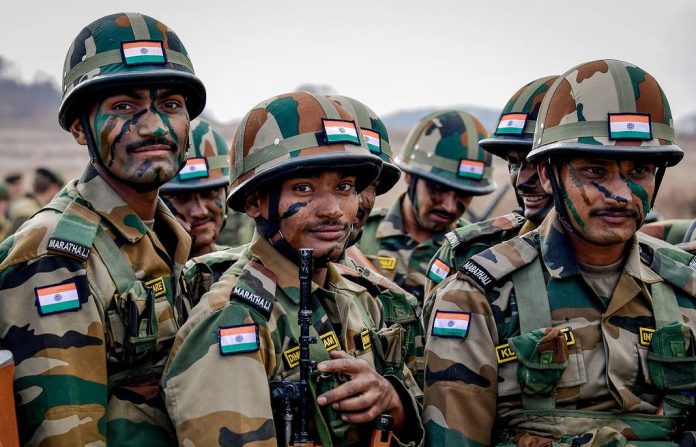The Agnipath Scheme introduced by the Government of India on 14th June 2022 is a tour of duty scheme for the recruitment of soldiers below the rank of commissioned officers into the three branches of the armed forces. Since its announcement, it has garnered polarizing reactions from retired army personnel, defence experts and potential applicants as well.
Certain objectives that are sought to be achieved through the enactment of this scheme include bringing down the age profile of the army from its current average of 32 years, deploying fitter younger troops on the front lines and providing the youth with a once-in-a-lifetime opportunity to serve their country and contribute to national development.
But make no mistake, the primary goal is to reduce the defence pension bill which has been a major cause for concern for successive governments over the years.
The salient details of the recruitment process are as follows
- Aspirants must be between the ages of 17.5-21 years.
- Recruitment will be on an “all-India, all-class” basis.
- Applicants will be recruited to all three services through a centralized online system, with specific rallies and campus interviews. Recognised technical colleges such as Industrial Training Institutes and the National Skills Qualifications Framework , among others will conduct the interviews.
- Agniveers will be enrolled for a period of four years.
- Under the Agnipath scheme, 46,000 Agniveers are expected to be recruited through this scheme. Up to 25 per cent of the applicants will be selected based on merit and perfoamce to serve for a full term of another 15 years. The remaining 75% of Agniveers will be demobilized, with an exit or “Seva Nidhi” package of Rs 11-12 lakh. On completing four years, these engineers will enter society as a disciplined, dynamic, motivated, and skilled workforce for employment in other sectors to pursue their career in the job of their choice.
The announcement of the scheme was met with large-scale unrest. Massive protests erupted across India, mainly in the states of Bihar and Uttar Pradesh, with the youth taking to the streets to express their dissatisfaction with the introduced Agnipath scheme.
Blocked roads, sloganeering and burnt trains all painted a picture of chaos and mayhem across the country. The protestors complained that the new scheme hindered their claim for monetary benefits, such as pensions and gratuity since the Centre plans to absorb only 25 per cent of the Agniveers after the completion of their 4-year tenure.
Another common grouse was that instead of filling permanent vacancies that come with pension and other benefits in the 13-lakh strong armed forces, the government launched a short-term recruitment scheme. This sentiment has been echoed by certain defence experts as well. In a country where there is no shortage of those who seek a regular job in the forces, doubts have been raised over the need for short-service recruitment.
Furthermore, demands were made to raise the upper age limit since a large number of potential applicants had already crossed the present limit of 23 years. This was in part due to defence recruitment being stalled for two years on account of the pandemic.
Another reason cited by the proponents of this scheme is that it seeks to cut down the army’s strength to under 11 lakh from the current 13 lakh, to ensure that the army is a modern force driven by technology and is no longer manpower intensive.
Here is where a loophole comes to light- the eligibility criteria to apply for the scheme are class 10 pass for general duty and class 12 pass for technical operations. How this will help to handpick soldiers that are more tech-savvy is unknown since the educational requirements are the same as those involved in the permanent recruitment process.
Apart from that, youth often spend years training with the NCC, before entering the army. All that for just four years after which one would be required to reorient oneself with the needs of a different job upon reaching the age of 30. This does not bode well for morale. Questions have also been raised over the time dedicated to training period and if the Agniveers will even be as motivated as soldiers who are on permanent rolls.
However, there is a need to face reality and reconcile ourselves to the cold hard truth. The pensions and salaries bill takes a big chunk of the defence budget, leaving little for expenditure on modernizing the armed forces. Of the total defence allocation, only 30 per cent of the defence budget can be used for capital procurement.
Simply put we cannot afford to continue paying pensions and salaries at the current rate to ever-increasing personnel eligible for the aforementioned defence pensions.
In order to assuage the fears of potential applicants, Vice Chief of Indian Army Lt Gen B S Raju in an interview given to News18 clarified that “The Agniveer project is being rolled out in a very controlled manner and that’s the reason it can be deemed as a pilot project.” This clearly indicates that the Government might bring about a few changes to the process after gaining some experience from the rollout of this project.
Despite any misgivings expressed by various experts and former army personnel, it is safe to state that the country has given big thumbs up to the Agnipath scheme. The Indian Air Force (IAF) has received 7.5 lakh applications under the “Agnipath” recruitment. While the Indian Navy Navy announced that over 9.55 lakh applications have come in via the Agnipath registrations portal. Out of these 9.55 lakh applications, 82,000 are women, a scheme showcasing the youth’s keenness to join the armed forces.




























